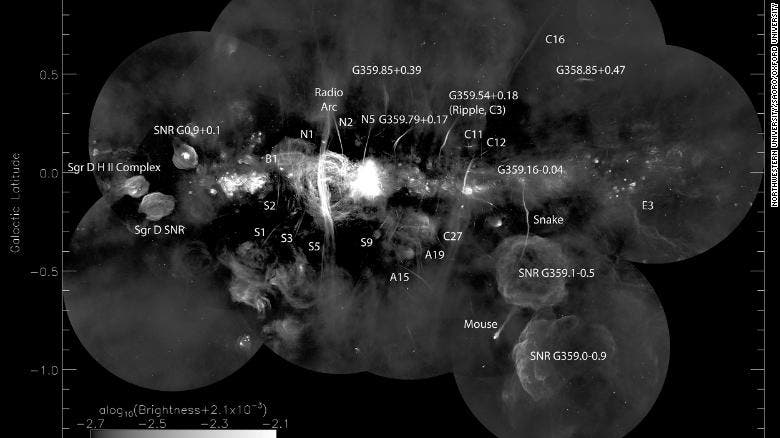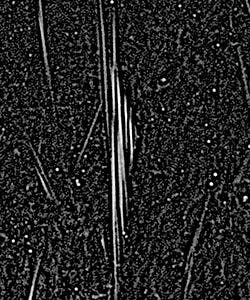
Sometimes, astronomic discoveries are so immensely weird that it’s hard to know what to make of them. This is exactly the case here.
It all started in the 1980s when researchers led by Northwestern University’s Farhad Yusef-Zadeh discovered a few highly organized, magnetic filaments seemingly stretching out of the central area of the Milky Way galaxy. These strands appeared to be made of cosmic ray electrons that were rotating their magnetic fields at near the speed of light. But why these strands exist and what exactly they are has remained a mystery.
It’s still a mystery today, but we’ve moved closer to understanding them. In a new study, Yusef-Zadeh’s team used data from the South African Radio Astronomy Observatory (SARAO) — particularly, the MeerKAT radio telescope. The telescope enabled the researchers to visualize the strands in unprecedented detail, finding startling details about them.

For starters, there’s much more of them than previously expected. They’re essentially one-dimensional, like strings, except these strings measure around 150 light-years in length. They also appear to be surprisingly ordered. Within clusters, they are separated from one another at nearly perfectly equal distances — about the distance from the Earth to the Sun.
“They almost resemble the regular spacing in solar loops,” Yusef-Zadeh said. “We still don’t know why they come in clusters or understand how they separate, and we don’t know how these regular spacings happen. Every time we answer one question, multiple other questions arise.”
They also seem to neighbor the galactic center, as well as newly-discovered supernova remnants. But there’s a difference: the filaments exhibit a radiation pattern different from that of the supernova, suggesting that the phenomena have different origins.
However, we still have no idea when and why they formed, or how exactly the electrons change their magnetic field so quickly.
“How do you accelerate electrons at close to the speed of light?” he asked. “One idea is there are some sources at the end of these filaments that are accelerating these particles.”
Nevertheless, the fact that they’ve now uncovered so many of these filaments means researchers can actually study them statistically, and maybe some information can emerge from this study, Yusef-Zadeh believes. His team is currently cataloging each filament, noting the angle, curve, magnetic field, spectrum, and intensity.
“If you were from another planet, for example, and you encountered one very tall person on Earth, you might assume all people are tall. But if you do statistics across a population of people, you can find the average height,” Yusef-Zadeh explains.
“That’s exactly what we’re doing. We can find the strength of magnetic fields, their lengths, their orientations and the spectrum of radiation.”
Having spent decades looking at these filaments, Yusef-Zadeh still rejoices in learning about such a unique structure. This is all possible thanks to the advent of powerful telescopes, he emphasizes.
“I’ve spent a lot of time looking at this image in the process of working on it, and I never get tired of it,” Heywood said. “When I show this image to people who might be new to radio astronomy, or otherwise unfamiliar with it, I always try to emphasize that radio imaging hasn’t always been this way, and what a leap forward MeerKAT really is in terms of its capabilities. It’s been a true privilege to work over the years with colleagues from SARAO who built this fantastic telescope.”
Journal Reference: F. Yusef-Zadeh et al, Statistical Properties of the Population of the Galactic Center Filaments: The Spectral Index and Equipartition Magnetic Field. arXiv:2201.10552v1 [astro-ph.GA], arxiv.org/pdf/2201.10552.pdf
I. Heywood et al, The 1.28 GHz MeerKAT Galactic Center Mosaic. arXiv:2201.10541v1 [astro-ph.GA], arxiv.org/abs/2201.10541







